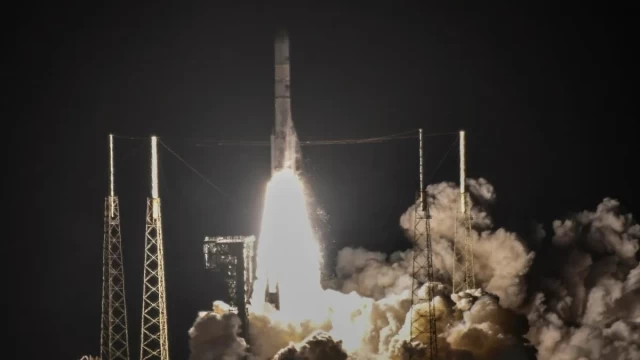Historic Leap: Peregrine-1 Launched for US's First Moon Mission in 51 Years
- Posted on January 8, 2024
- Science
- By Arijit Dutta
- 343 Views
The United States has initiated a historic lunar mission, deploying the Peregrine-1 lander, marking a 51-year hiatus in American ventures to the Moon. This mission, spearheaded by the private company Astrobotic, commenced successfully from Cape Canaveral, Florida, indicating a significant leap in space exploration.
 Image Source -www.indiatoday.in
Image Source -www.indiatoday.in
The
Peregrine-1, equipped with scientific apparatus from NASA, embarks on a pivotal
journey to scrutinize the Moon's surface environment. Scheduled to land on
February 23, it aims to pave the way for forthcoming human missions by
analyzing the terrain and conditions meticulously.
Departing
from Florida's Cape Canaveral via the Vulcan Centaur rocket, the Peregrine
lander targets a soft lunar landing at the "Bay of Stickiness,"
hinting at volcanic material possibly shaping the adjacent landscape, as per
reports.
Post-launch,
Astrobotic's mission control received signals from the lander, which maneuvers
into a highly elliptical orbit, charting its course towards the Moon. This
mission operates under NASA's commercial lunar payload services initiative,
engaging private entities to transport scientific instruments for lunar
exploration.
Peregrine
carries a suite of payloads including five NASA instruments and 15 other
components, conducting assessments ranging from radiation levels to subsurface
water ice and the lunar magnetic field. The research aims to mitigate risks and
harness the Moon's resources for future human presence.
Remarkably,
the lander hosts the first Latin American scientific instruments attempting to
reach the Moon's surface. Alongside these, five miniature moon rovers and
various non-scientific payloads, like a Bitcoin-loaded coin and a capsule with
messages from global children, are part of the payload.
This mission holds critical significance for the United Launch Alliance (ULA), competing with Elon Musk's Space X by deploying the Vulcan rocket, developed over a decade to supersede the Atlas V. Additionally, it memorializes individuals linked to the Star Trek franchise, underscoring its cultural significance.
Also Read: IND Vs AFG: Rohit Sharma Seeks To Surpass Virat Kohli's Enormous Record During The T20I Series.
Astrobotic
leads the charge as the inaugural participant of the lunar initiative, with
Intuitive Machines and Firefly set to follow. NASA's partnership underscores
its aim to leverage commercial entities for lunar missions, reducing
operational costs over time.
However,
objections from the Navajo Nation, considering the lunar remains' placement as
desecration, pose a challenge. NASA has acknowledged this concern and is
engaging in discussions to address the indigenous community's sentiments.
The
launch signifies a pivotal chapter in lunar exploration, steering space
endeavors towards broader horizons, albeit with social and ethical
considerations needing careful navigation.



